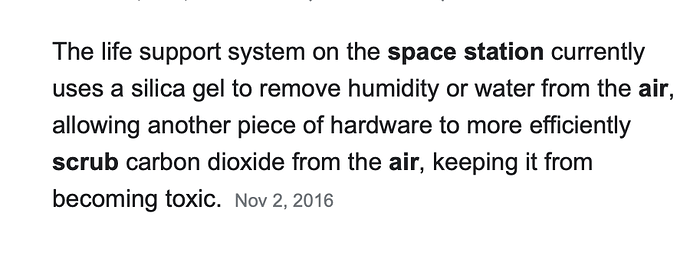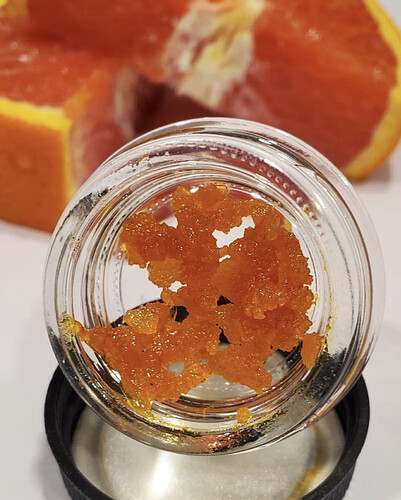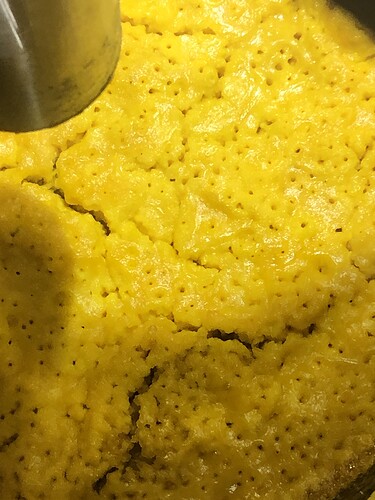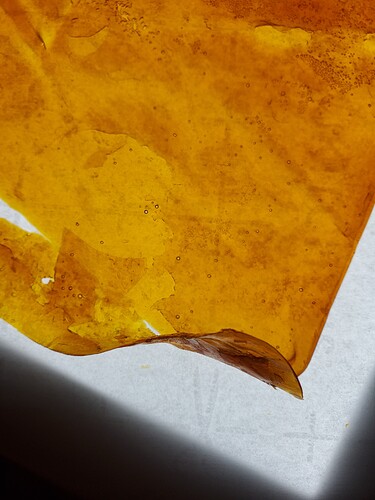I have seen a number of orange concentrates(mainly badder) my guess is its poor quality CRC? Blasting old trim, then CRC’ing it and whipping it up with fake terps?
Color never has been and probably never will be a great indication of quality. Some of the best dabs I’ve had have been shit brown.
Also a lot of heavy propane mixes will make a lil more orange extract from what I’ve seen.
@Killa12345 how are the oranges down in Florida?
IMO fresh squeezed is the only way to go with OJ
The only thing the oranges in FL are good for is for juice. There’s orange blight which makes them visually unappealing, but does nothing to the fruit. As such, juicing oranges are grown mostly here, and the kind you eat are grown in good ole Cali
you can put gold wrapping on a dog turd. its still a dog turd. CRC is for people who think all pot good or bad should be smoked. I remember wen people actually sorted though grades of biomass and only sold what was inherently gold and smokeable…smh.
Clearly you’ve never tried any of @murphymurri @Dred_pirate or @AshevilleExtracts crcd stuff. I assure you it’s not just for mids ![]()
Also with a name like @HydrocarbonaMarvin I would think u would know that
ill stick to my lane, and you all can be the guniea pigs for wether or not sucking down crc’d hash has any unforeseen side effects. still not convinced everything your leaving behind In a crcd’d exract is “healthier” call me a skeptic or whatever I need hard data showing it is and why.
It’s not new technology. If you use any nicely colored cooking oils, you’re technically using “CRC’d products”.
“Use of bleaching, clays, in processing edible oils | SpringerLink” Use of bleaching, clays, in processing edible oils | SpringerLink
point me to one piece of literature that distinctly talks about using powders on any substance that is about to be inhaled. im fully aware filtration is used in wine ect.
I’m sure I won’t find it considering the federal legal status of cannabis.
What exactly are you focusing on? Poor handling and breaching of the filter paper?
fair enough.
Presentation is important
T5 alone or carbon alone will usually yield orange extracts. Light crc will also yield orange
Carotene is bright orange, and is pretty soluble in hydrocarbons. When the rest of the oil is colorless, that bright orange carotene really shines through. Carotene is not removed with polar adsorption.
Anthocyanins in acidic conditions will indicate bright orange hues. Generally these are removed with common crc methods.
Several esters that come out in late fractions when using a chromatography method are reddish-orange, which will look more light orange when paired with yellow flavonoids. These are sometimes lost to crc when the column isn’t rinsed properly or when too much carbon is used.
In any case, complaining about or praising “color” is a big misleading anti-data habit that we all need to stop. If you can’t identify the “orange” compound you like or don’t like by name then you should be posting about identifying that compound way before worrying about whether or not it’s caused by crc ![]() there’s a million orange things on this planet, start crossing them off your lists and when that list is short enough maybe we can start with some indicator tests and address these issues with science.
there’s a million orange things on this planet, start crossing them off your lists and when that list is short enough maybe we can start with some indicator tests and address these issues with science.
I think it would only be unhealthy if acidic medias were used to produce oil that is meant for edibles
Can you name an ester in cannabis that is red or orange? Seen hundreds of esters show up but never one that wasn’t clear or slightly yellow at best.
What about pharmaceutical grade filtration after the media? If there is hardly a chance for any solids, or particulate to make it through, especially at that grade of filtration (0.2 micron), would you still consider it a hazard. In your opinion.
"### 5.1. Varietal odour-active compounds
Grape aroma has an important contribution to wine flavour and characteristics, particularly in the aromatic cultivars, and it evolves during berry development according to the cultivar. Terpenes, which represent the main family of compounds and are present both as free and as glycosylated terpenoids, are mainly present in the grape skin and are present in high amounts in Muscat grape varieties [70]. Variable concentrations of norisoprenoids, that is C-13 norisoprenoids, such as β-damascenone, can improve the fruity note of wines, even at low concentrations [71], and are responsible for the aroma characteristics of Cabernet Sauvignon [72] and other non-floral grapes [73]. In rare cases, methoxypyrazines and sulphur compounds with thiol functional groups have been identified among the aroma compounds of wines. Methoxypyrazines are often associated with ‘green’ or ‘herbaceous’ aromas in Cabernet Sauvignon, Sauvignon Blanc, Cabernet Franc and Merlot Noir, among other varieties
The effect of the dosing time of bentonite on the aroma profile at both industrial and pilot scales has been evaluated [81]. The results seemed to indicate that the addition of bentonite not only affects the wine aroma by the adsorption of compounds but also by the production of these compounds during fermentation. Bentonite treatments at different stages of fermentation generally affected the production of volatile fermentative compounds. In addition to the possible loss of volatile compounds due to adsorption on bentonite, the effects on the production of fermentative compounds could be related to the variations in the nitrogen composition and other nutrients of musts and wines that are removed by the bentonite [82]. In a model solution, the presence of total and purified proteins (TL proteins and chitinase) and bentonite tended to increase the loss of esters with the longest carbon chains that is ethyl octanoate and ethyl decanoate showing that hydrophobicity can be one of the driving forces involved in the interaction of aroma compounds with both bentonite and proteins.
As a matter of fact, it was demonstrated [[83]] that the effect of bentonite treatments on the aroma substances in white wine depended on the chemical nature and initial concentration of the volatile compounds and on the abundance and nature of proteins in the wine. In general, when low bentonite concentrations (20 g/hl) are used, the concentrations of most aromatic substances are not significantly affected. Most aroma compounds are removed as an indirect effect of deproteinization; some hydrophilic odour-active compounds undergo weak hydrogen binding with protein surfaces, whereas the more hydrophobic aromatic molecules can bind to interior protein sites with a stronger affinity for hydrophobic substances. Only a few odour-active compounds are directly adsorbed by the bentonite through an adsorption process, which is robustly fitted by the Freundlich equation, with a heterogeneous energy distribution of an infinite number of surface-active sites [[84]]. Bentonites with a lower SSA value and a greater CDSU value seemed to primarily interact with most of the odour-active compounds through physical mechanisms. In contrast, the clay with a large SSA value and a low CDSU value promoted stronger adsorptions that were probably driven by chemical interactions, particularly for the ethyl esters. For the fermentative odour-active compounds, the differences in the adsorption intensity and capacity mainly depended on the characteristics of the bentonite than on the properties of the substances. When yeast-derived material represents an important fraction of the wine macromolecules, colloids that favour aroma inclusion are held in suspension. In this situation, there may be fewer opportunities for the odour-active substances to be directly adsorbed onto the bentonite sheets [83]."
this is one of the only references I’ve found that talks about bentonites effects on terpenes, can’t find anything for hydrocarbon and its effects on terpenes wen ran through media. “whereas the more hydrophobic aromatic molecules can bind to interior protein sites with a stronger affinity for hydrophobic substances” wouldn’t this be what I was referring to as new terpene profiles created through CRC that aren’t naturally found?




